Huawei Lin
VTBench: Evaluating Visual Tokenizers for Autoregressive Image Generation
May 19, 2025Abstract:Autoregressive (AR) models have recently shown strong performance in image generation, where a critical component is the visual tokenizer (VT) that maps continuous pixel inputs to discrete token sequences. The quality of the VT largely defines the upper bound of AR model performance. However, current discrete VTs fall significantly behind continuous variational autoencoders (VAEs), leading to degraded image reconstructions and poor preservation of details and text. Existing benchmarks focus on end-to-end generation quality, without isolating VT performance. To address this gap, we introduce VTBench, a comprehensive benchmark that systematically evaluates VTs across three core tasks: Image Reconstruction, Detail Preservation, and Text Preservation, and covers a diverse range of evaluation scenarios. We systematically assess state-of-the-art VTs using a set of metrics to evaluate the quality of reconstructed images. Our findings reveal that continuous VAEs produce superior visual representations compared to discrete VTs, particularly in retaining spatial structure and semantic detail. In contrast, the degraded representations produced by discrete VTs often lead to distorted reconstructions, loss of fine-grained textures, and failures in preserving text and object integrity. Furthermore, we conduct experiments on GPT-4o image generation and discuss its potential AR nature, offering new insights into the role of visual tokenization. We release our benchmark and codebase publicly to support further research and call on the community to develop strong, general-purpose open-source VTs.
ALinFiK: Learning to Approximate Linearized Future Influence Kernel for Scalable Third-Parity LLM Data Valuation
Mar 02, 2025Abstract:Large Language Models (LLMs) heavily rely on high-quality training data, making data valuation crucial for optimizing model performance, especially when working within a limited budget. In this work, we aim to offer a third-party data valuation approach that benefits both data providers and model developers. We introduce a linearized future influence kernel (LinFiK), which assesses the value of individual data samples in improving LLM performance during training. We further propose ALinFiK, a learning strategy to approximate LinFiK, enabling scalable data valuation. Our comprehensive evaluations demonstrate that this approach surpasses existing baselines in effectiveness and efficiency, demonstrating significant scalability advantages as LLM parameters increase.
UniGuardian: A Unified Defense for Detecting Prompt Injection, Backdoor Attacks and Adversarial Attacks in Large Language Models
Feb 18, 2025



Abstract:Large Language Models (LLMs) are vulnerable to attacks like prompt injection, backdoor attacks, and adversarial attacks, which manipulate prompts or models to generate harmful outputs. In this paper, departing from traditional deep learning attack paradigms, we explore their intrinsic relationship and collectively term them Prompt Trigger Attacks (PTA). This raises a key question: Can we determine if a prompt is benign or poisoned? To address this, we propose UniGuardian, the first unified defense mechanism designed to detect prompt injection, backdoor attacks, and adversarial attacks in LLMs. Additionally, we introduce a single-forward strategy to optimize the detection pipeline, enabling simultaneous attack detection and text generation within a single forward pass. Our experiments confirm that UniGuardian accurately and efficiently identifies malicious prompts in LLMs.
Online Gradient Boosting Decision Tree: In-Place Updates for Efficient Adding/Deleting Data
Feb 03, 2025



Abstract:Gradient Boosting Decision Tree (GBDT) is one of the most popular machine learning models in various applications. However, in the traditional settings, all data should be simultaneously accessed in the training procedure: it does not allow to add or delete any data instances after training. In this paper, we propose an efficient online learning framework for GBDT supporting both incremental and decremental learning. To the best of our knowledge, this is the first work that considers an in-place unified incremental and decremental learning on GBDT. To reduce the learning cost, we present a collection of optimizations for our framework, so that it can add or delete a small fraction of data on the fly. We theoretically show the relationship between the hyper-parameters of the proposed optimizations, which enables trading off accuracy and cost on incremental and decremental learning. The backdoor attack results show that our framework can successfully inject and remove backdoor in a well-trained model using incremental and decremental learning, and the empirical results on public datasets confirm the effectiveness and efficiency of our proposed online learning framework and optimizations.
DMin: Scalable Training Data Influence Estimation for Diffusion Models
Dec 11, 2024Abstract:Identifying the training data samples that most influence a generated image is a critical task in understanding diffusion models, yet existing influence estimation methods are constrained to small-scale or LoRA-tuned models due to computational limitations. As diffusion models scale up, these methods become impractical. To address this challenge, we propose DMin (Diffusion Model influence), a scalable framework for estimating the influence of each training data sample on a given generated image. By leveraging efficient gradient compression and retrieval techniques, DMin reduces storage requirements from 339.39 TB to only 726 MB and retrieves the top-k most influential training samples in under 1 second, all while maintaining performance. Our empirical results demonstrate DMin is both effective in identifying influential training samples and efficient in terms of computational and storage requirements.
Token-wise Influential Training Data Retrieval for Large Language Models
May 20, 2024Abstract:Given a Large Language Model (LLM) generation, how can we identify which training data led to this generation? In this paper, we proposed RapidIn, a scalable framework adapting to LLMs for estimating the influence of each training data. The proposed framework consists of two stages: caching and retrieval. First, we compress the gradient vectors by over 200,000x, allowing them to be cached on disk or in GPU/CPU memory. Then, given a generation, RapidIn efficiently traverses the cached gradients to estimate the influence within minutes, achieving over a 6,326x speedup. Moreover, RapidIn supports multi-GPU parallelization to substantially accelerate caching and retrieval. Our empirical result confirms the efficiency and effectiveness of RapidIn.
Activation Template Matching Loss for Explainable Face Recognition
Jul 05, 2022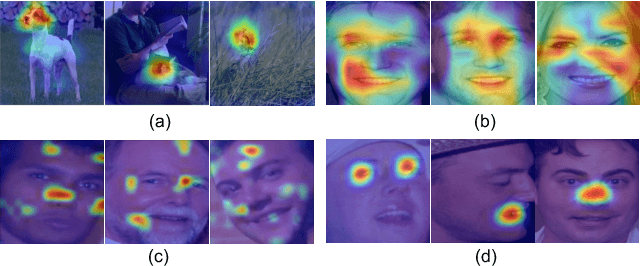
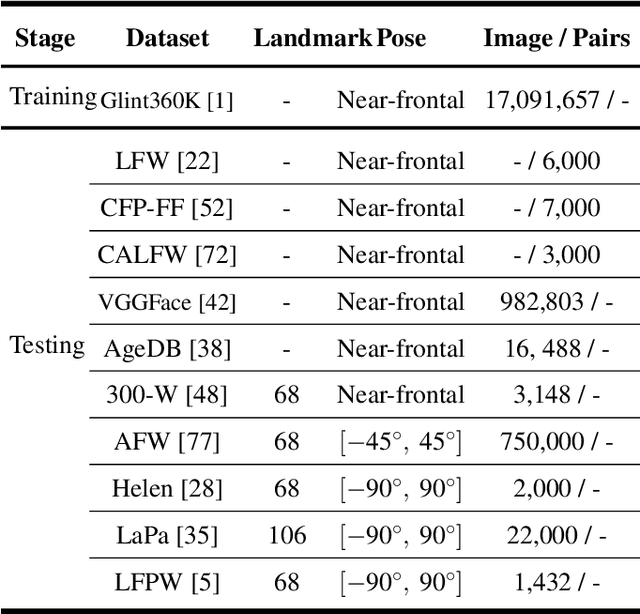
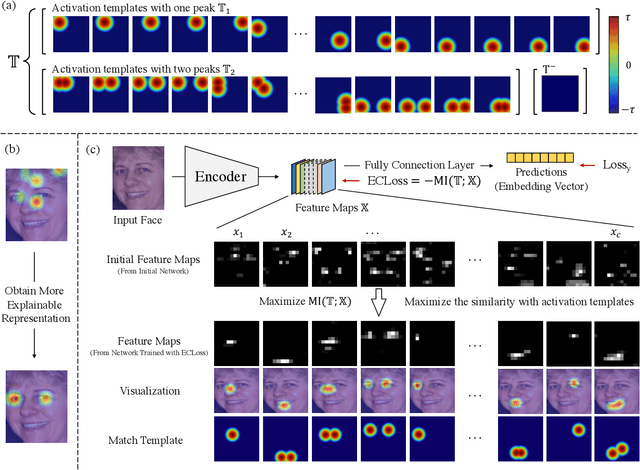

Abstract:Can we construct an explainable face recognition network able to learn a facial part-based feature like eyes, nose, mouth and so forth, without any manual annotation or additionalsion datasets? In this paper, we propose a generic Explainable Channel Loss (ECLoss) to construct an explainable face recognition network. The explainable network trained with ECLoss can easily learn the facial part-based representation on the target convolutional layer, where an individual channel can detect a certain face part. Our experiments on dozens of datasets show that ECLoss achieves superior explainability metrics, and at the same time improves the performance of face verification without face alignment. In addition, our visualization results also illustrate the effectiveness of the proposed ECLoss.
Research on Gender-related Fingerprint Features
Aug 18, 2021
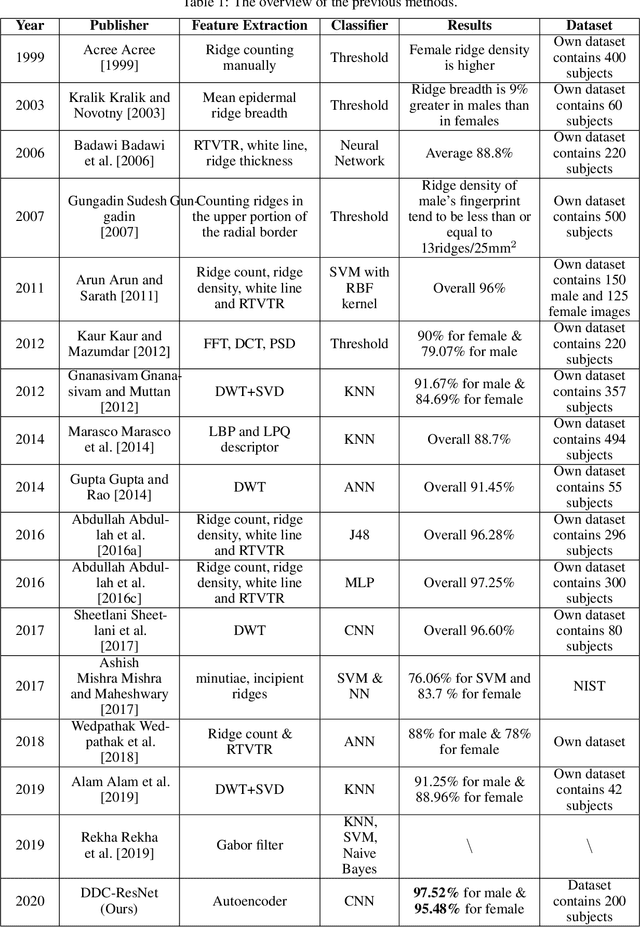
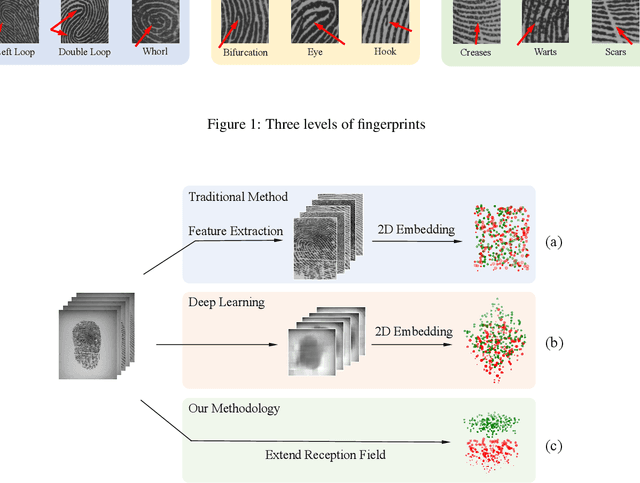
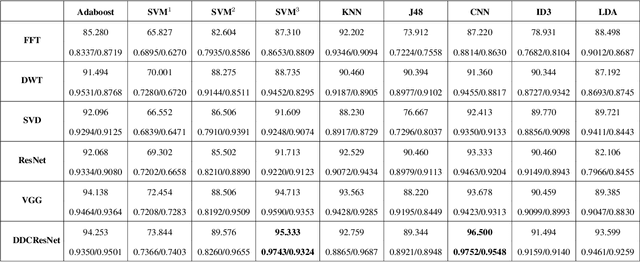
Abstract:Fingerprint is an important biological feature of human body, which contains abundant gender information. At present, the academic research of fingerprint gender characteristics is generally at the level of understanding, while the standardization research is quite limited. In this work, we propose a more robust method, Dense Dilated Convolution ResNet (DDC-ResNet) to extract valid gender information from fingerprints. By replacing the normal convolution operations with the atrous convolution in the backbone, prior knowledge is provided to keep the edge details and the global reception field can be extended. We explored the results in 3 ways: 1) The efficiency of the DDC-ResNet. 6 typical methods of automatic feature extraction coupling with 9 mainstream classifiers are evaluated in our dataset with fair implementation details. Experimental results demonstrate that the combination of our approach outperforms other combinations in terms of average accuracy and separate-gender accuracy. It reaches 96.5% for average and 0.9752 (males)/0.9548 (females) for separate-gender accuracy. 2) The effect of fingers. It is found that the best performance of classifying gender with separate fingers is achieved by the right ring finger. 3) The effect of specific features. Based on the observations of the concentrations of fingerprints visualized by our approach, it can be inferred that loops and whorls (level 1), bifurcations (level 2), as well as line shapes (level 3) are connected with gender. Finally, we will open source the dataset that contains 6000 fingerprint images
 Add to Chrome
Add to Chrome Add to Firefox
Add to Firefox Add to Edge
Add to Edge